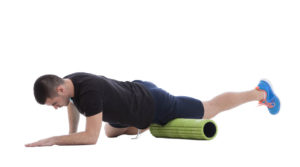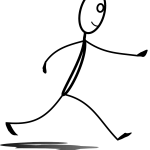Foam rolling went through a phase a few years ago where it seemed to be essential in any warm up. It has now fallen out of favour and isn’t seen as essential to a warm-up anymore. Foam rolling was never essential to any warm-up but I still think there can be a use for it.
I find it useful when used at home if feeling stiff/sore and it makes it easier to ease into larger ranges of movement. My preference is still not to do any foam rolling in a warm-up. This is based primarily because there often isn’t a foam roller about or there isn’t the room.
 Continue reading “Foam Rolling – how to get the most out of it.”
Continue reading “Foam Rolling – how to get the most out of it.”

